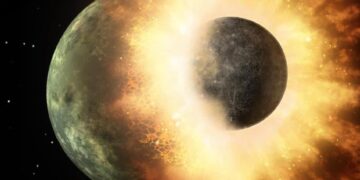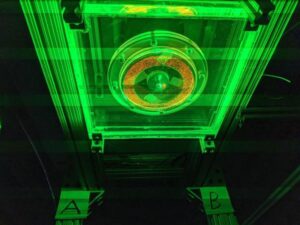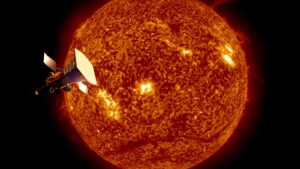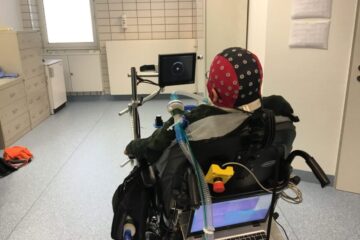Dust devils (convective vortices loaded with dust) are common at the surface of Mars, particularly at Jezero crater, the landing site of the Perseverance rover. They are indicators of atmospheric turbulence and are an essential lifting mechanism for the Martian dust cycle.
When the Perseverance rover landed on Mars, it was equipped with the first working microphone on the planet’s surface. Now, scientists have used it to make the first-ever audio recording of an extraterrestrial whirlwind.
Roger Wiens, professor of Earth, atmospheric and planetary sciences in Purdue University’s College of Science, said, “We can learn a lot more using sound than we can with other tools. They take readings at regular intervals. The microphone lets us a sample, not quite at the speed of sound, but nearly 100,000 times a second. It helps us get a stronger sense of what Mars is like.”
Every few days, the microphone records for around three minutes instead of being on all the time. Wiens claimed that although not necessarily unexpected, getting the whirlwind recording was fortunate. Since Perseverance’s landing in the Jezero Crater, the crew has found evidence of roughly 100 dust devils—tiny dust and grit tornadoes. The microphone was turned on for the first time as one passed over the rover.
Together with air pressure measurements and time-lapse photos, the dust devil sound recording aids in the understanding of the Martian weather and atmosphere.
Wiens said, “We could watch the pressure drop, listen to the wind, then have a little bit of silence that is the eye of the tiny storm, and then hear the wind again and watch the pressure rise. It all happened in a few seconds. The wind is fast — about 25 miles per hour, but about what you would see in a dust devil on Earth. The difference is that the air pressure on Mars is so much lower than the winds while just as fast, pushing with about 1% of the pressure the same speed of wind would have back on Earth. It’s not a powerful wind, but enough to loft particles of grit into the air to make a dust devil.”
According to the information, future astronauts won’t have to worry about gale-force winds tearing down antennae or habitats, meaning there won’t be any Mark Watneys left behind. However, the wind might even have certain advantages. Other rovers, especially Opportunity and Spirit, may have lasted longer due to breezes blowing grit off their solar panels.
Wiens said, “Those rover teams would see a slow decline in power over a number of days to weeks, then a jump. That was when wind cleared off the solar panels.”
“Just like Earth, there is different weather in different areas on Mars. Using all our instruments and tools, especially the microphone, helps us get a concrete sense of what it would be like to be on Mars.”
Journal Reference:
- Murdoch, N., Stott, A.E., Gillier, M. et al. The sound of a Martian dust devil. Nat Commun 13, 7505 (2022). DOI: 10.1038/s41467-022-35100-z













